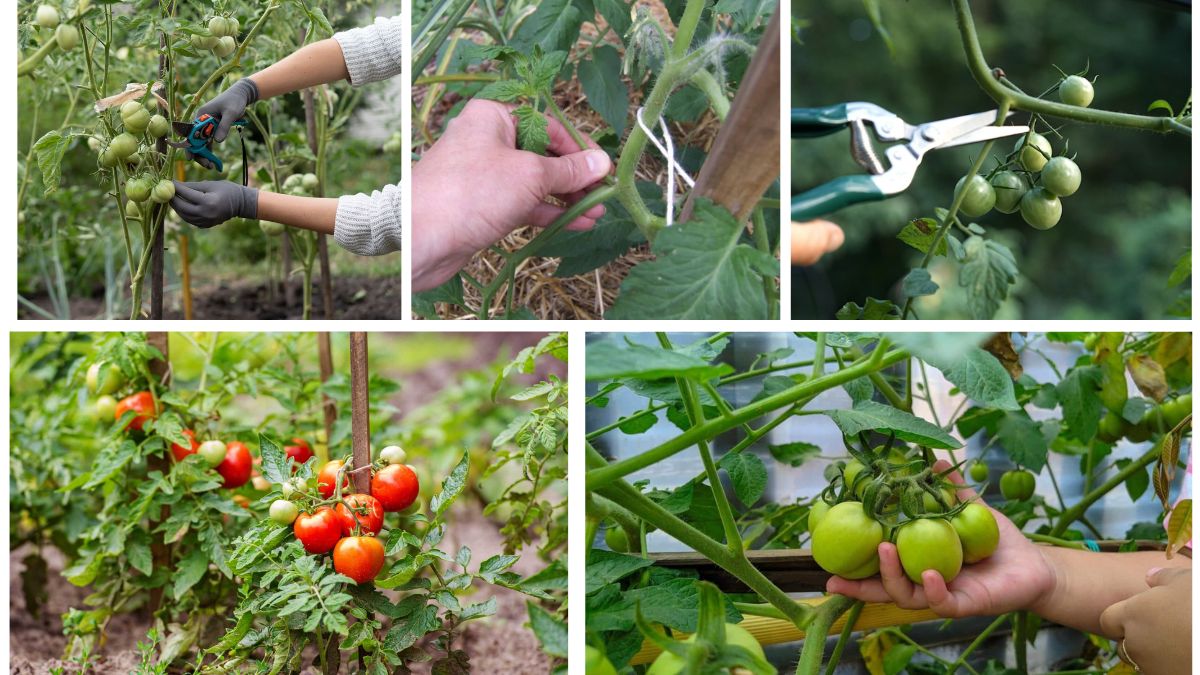Tomatoes are among the most rewarding plants to grow in a home garden. With their vibrant fruits, rich flavors, and versatility in the kitchen, they’ve become a favorite for both beginner and experienced gardeners. But while planting and watering are essential, many gardeners overlook one critical aspect of tomato care—pruning.
Pruning a tomato plant not only improves its appearance but also encourages stronger growth, better airflow, larger fruit production, and protection from pests and diseases. Done correctly, pruning can transform your tomato plant from a tangled mess of stems into a healthy, high-yielding garden star.
In this guide, we’ll take a detailed look at how to prune a tomato plant for better growth, covering everything from the reasons for pruning, the tools you’ll need, step-by-step pruning methods, common mistakes, and advanced tips to help your tomato plants thrive.
Why Pruning Tomato Plants Matters
Pruning is the selective removal of parts of the plant, usually stems, leaves, or suckers, to direct the plant’s energy toward healthy fruit production. While it may seem counterintuitive to cut away growth, pruning has several important benefits:
- Improves Airflow and Sunlight Penetration
A crowded tomato plant often traps humidity, which creates the perfect environment for fungal diseases like blight or powdery mildew. Pruning thins out dense foliage, improving airflow and allowing sunlight to reach the lower leaves. - Encourages Larger, Healthier Fruits
Instead of spreading its energy across many small tomatoes, a pruned plant channels nutrients into fewer but bigger, juicier fruits. - Prevents Disease and Pest Problems
By keeping the plant upright and manageable, pruning helps reduce the risk of soil-borne pathogens splashing onto leaves and discourages pests from hiding in dense foliage. - Makes Harvesting Easier
A pruned tomato plant is more structured and less tangled, making it easier to pick ripe fruits without damaging the plant.
Determinate vs. Indeterminate Tomatoes: Why It Matters for Pruning
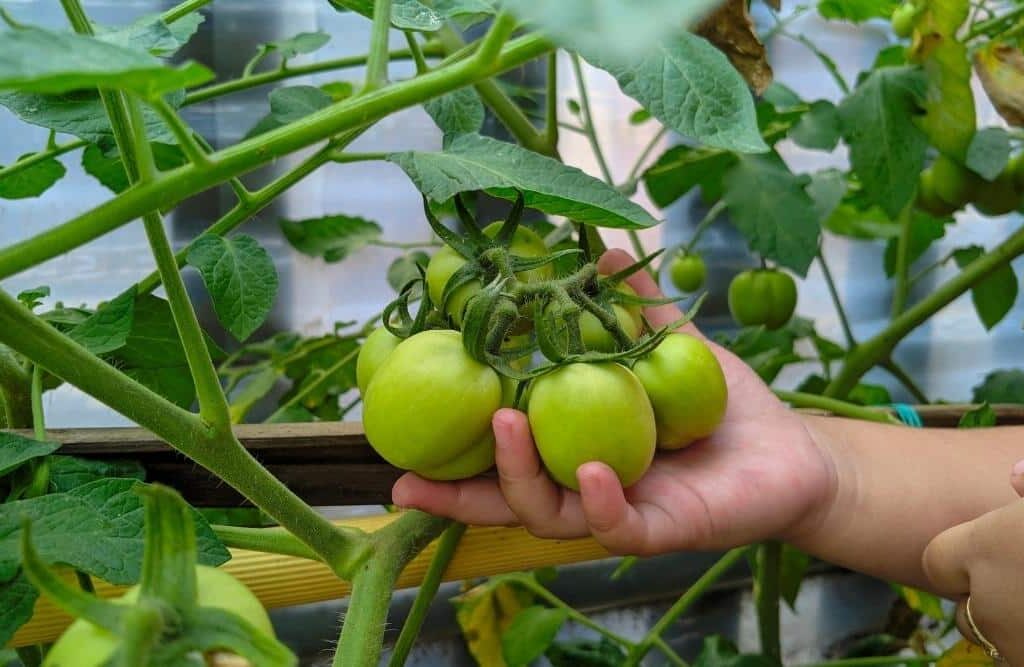
Before you start pruning, it’s crucial to understand what type of tomato plant you’re growing, as this determines how much pruning is necessary.
- Determinate (Bush) Tomatoes
These varieties grow to a set height, produce fruit all at once, and then stop growing. Examples include Roma and Celebrity tomatoes. They require minimal pruning, as heavy pruning can reduce yield. Only remove dead or diseased leaves and a few suckers if the plant is overcrowded. - Indeterminate (Vining) Tomatoes
These varieties grow continuously throughout the season, producing fruit until frost. Examples include Beefsteak, Brandywine, and Cherry tomatoes. They require regular pruning to manage growth, improve fruit quality, and keep the plant under control.
Knowing your plant type ensures you prune just enough to encourage healthy growth without sacrificing yield.
Tools You’ll Need for Pruning
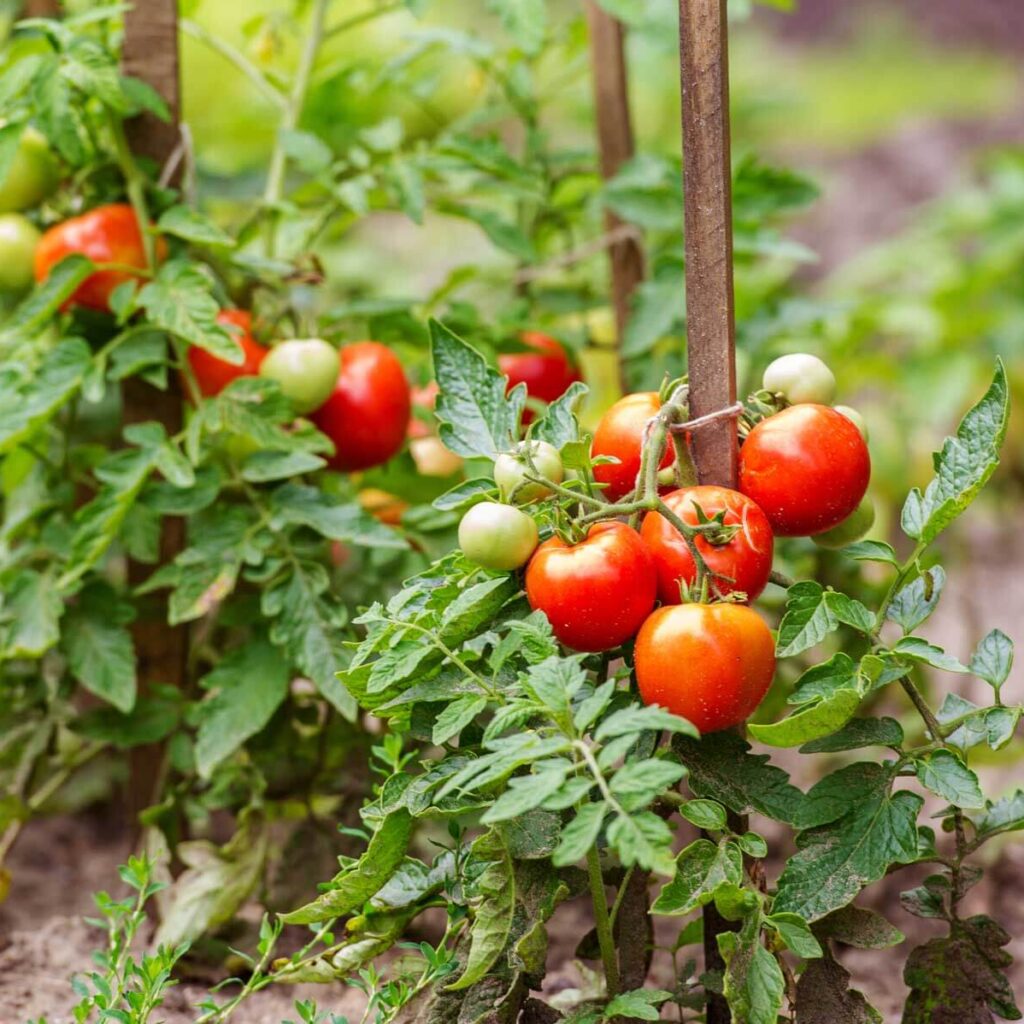
To prune effectively and safely, you’ll need:
- Sharp pruning shears or scissors – for cutting thicker stems.
- Clean hands – many gardeners pinch suckers with their fingers.
- Gloves – to protect your hands from sticky tomato sap.
- Sanitizer or rubbing alcohol – to disinfect tools between cuts, preventing the spread of disease.
Always ensure tools are sharp and clean before pruning, as dull blades can damage stems and invite infections.
Step-by-Step Guide to Pruning Tomato Plants
Here’s a detailed process to prune your tomato plants for better growth:
Step 1: Identify the Suckers
Suckers are the small shoots that grow in the axil, which is the junction between the main stem and a leaf branch. If left unchecked, suckers develop into full branches, making the plant bushier. For indeterminate varieties, this leads to overcrowding and smaller fruits.
Step 2: Decide Which Suckers to Remove
- For indeterminate tomatoes, remove most suckers to focus energy on fruiting.
- For determinate tomatoes, remove only lower suckers if the plant becomes too crowded.
A good rule of thumb: Keep the main stem and one or two strong suckers (leaders) while removing the rest.
Step 3: Remove Lower Leaves
Trim off any leaves that are close to the soil surface (usually the bottom 8–10 inches). These leaves are prone to picking up soil-borne diseases when it rains or when you water the plant.
Step 4: Pinch or Cut at the Right Time
- For small suckers (2–4 inches long), simply pinch them off with your fingers.
- For larger stems, use sterilized pruning shears to avoid damaging the plant.
Step 5: Maintain Throughout the Season
Pruning isn’t a one-time task. Continue checking your tomato plants weekly to remove new suckers and keep the plant manageable.
Common Pruning Mistakes to Avoid
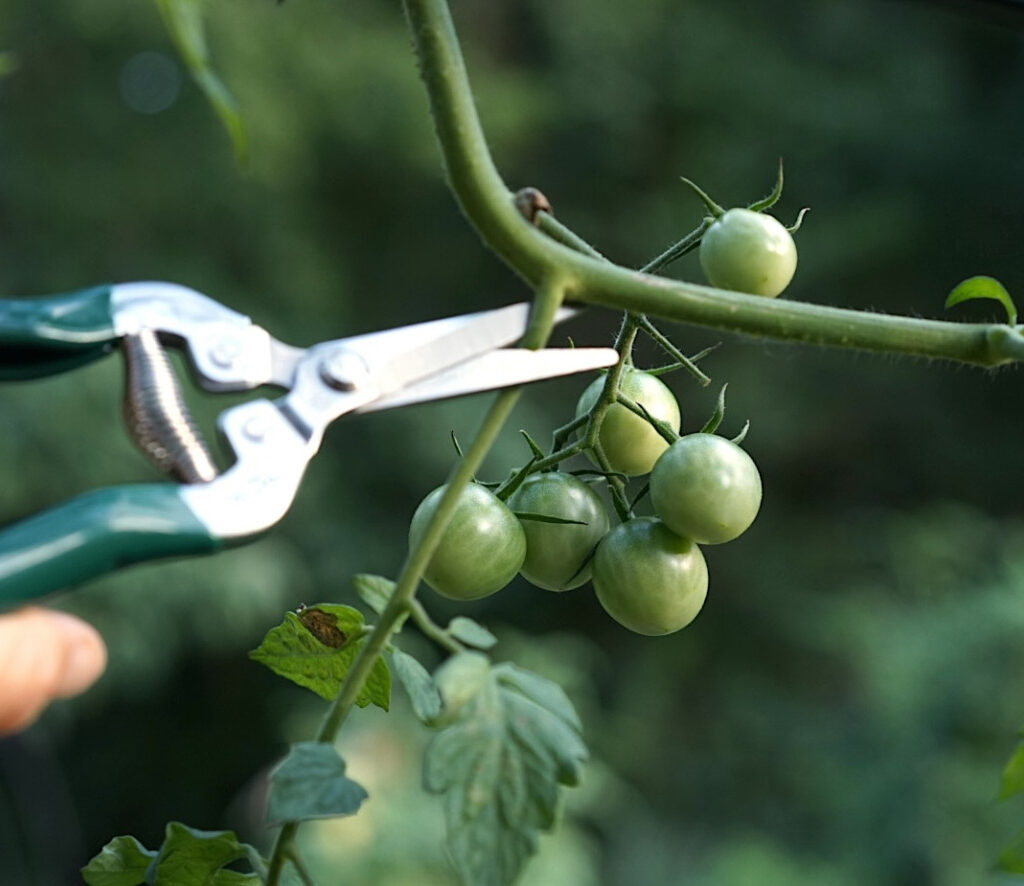
- Over-Pruning
Cutting too many leaves can reduce photosynthesis, which weakens the plant. Always leave enough foliage to protect fruits from sunscald. - Pruning at the Wrong Time
Avoid heavy pruning during the hottest part of the day or right before watering, as the plant may struggle to heal. Early morning is best. - Using Dirty Tools
Dirty blades can spread diseases from one plant to another. Always sanitize before pruning a new plant. - Removing All Suckers
While suckers can compete for energy, leaving one or two strong suckers helps increase yield without overwhelming the plant.
Advanced Tomato Pruning Techniques
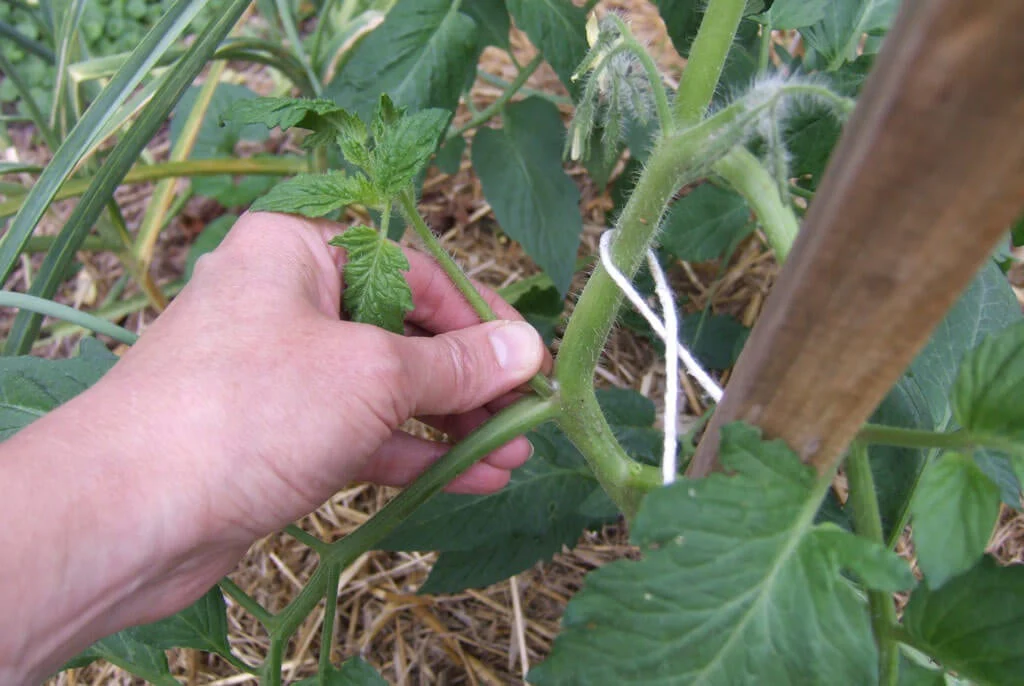
For gardeners who want to maximize yields and keep their plants in top shape, here are some advanced strategies:
1. Single-Stem Pruning
This method involves keeping just one main stem and removing all suckers. It’s ideal for indeterminate tomatoes grown in tight spaces or greenhouses. The result is fewer but larger fruits.
2. Double-Stem Pruning
In this method, the main stem and one strong sucker are allowed to grow, creating two productive leaders. This balances fruit yield with plant size and is commonly used in backyard gardens.
3. Topping
Toward the end of the season, cut off the top of the plant to stop vertical growth and encourage the plant to focus on ripening existing fruits instead of producing new ones.
4. Pruning for Trellises or Cages
Pruning should be adjusted based on how you support your plants:
- Staked plants benefit from single-stem pruning.
- Caged plants can handle a bit more foliage but still need lower suckers removed.
Additional Tips for Healthy Tomato Plants
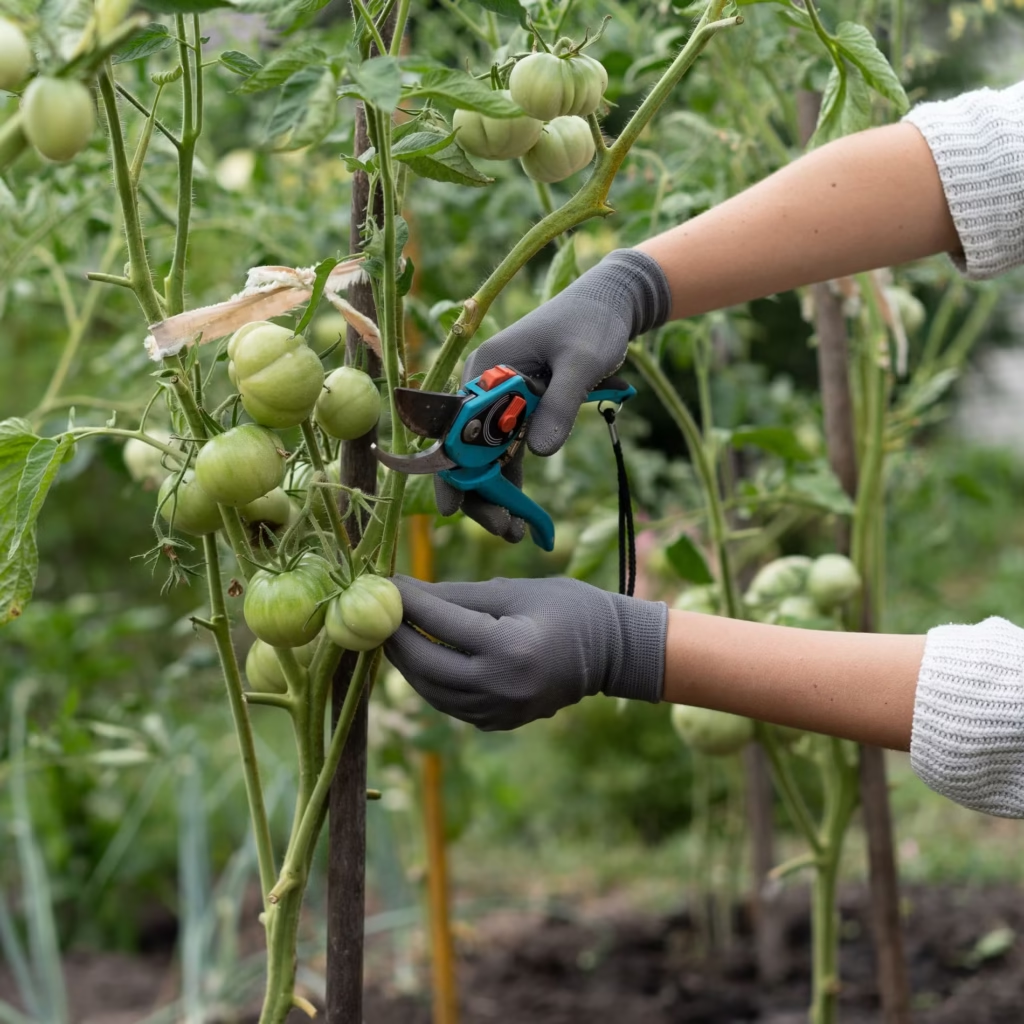
Pruning is just one piece of the puzzle. To ensure your plants thrive, combine pruning with these practices:
- Mulch the soil – This prevents soil from splashing onto leaves, reducing disease risk.
- Water at the base – Avoid overhead watering, which can spread fungal infections.
- Fertilize wisely – Use a balanced fertilizer, but avoid over-fertilizing with nitrogen, which encourages leafy growth over fruit.
- Rotate crops – Avoid planting tomatoes in the same spot each year to reduce disease build-up.
Conclusion
Pruning may seem intimidating at first, but once you understand the process, it becomes a simple yet powerful technique to improve the health and productivity of your tomato plants. By selectively removing suckers, trimming lower leaves, and managing plant structure, you’ll enjoy bigger, tastier tomatoes and healthier plants overall.
Whether you’re growing determinate varieties that need minimal pruning or indeterminate tomatoes that thrive with regular shaping, the key is to strike a balance between foliage and fruit. Combine good pruning practices with proper watering, mulching, and fertilization, and your tomato garden will reward you with a bountiful harvest season after season.
With this complete gardener’s guide, you now have the tools and knowledge to prune like a pro and enjoy the benefits of a thriving tomato garden.
